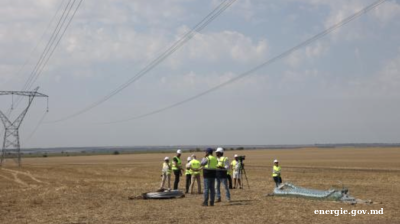Ukrainian citizens living in Poland contributed PLN1.65bn ($414mn) in personal and corporate income taxes in 2024, marking a 27.7% increase compared to the previous year and double the amount recorded in 2022, according to figures released by Gremi Personal analysts, PAP reported on May 8.
Ukrainians accounted for a third (33.7%) of total tax revenues collected from foreigners in Poland this year, reflecting their growing economic importance to the domestic economy. The rise in tax payments has been driven by a combination of structural factors, including tax reforms, higher wages, and a surge in Ukrainian entrepreneurship.
“The contribution of Ukrainians to the Polish economy continues to grow steadily, not only through employment but also through business creation and tax payments,” analysts from Gremi Personal said.
As of 2024, 1.55mn Ukrainian citizens reside in Poland, with a over a fifth (22%) based in Warsaw. Many are active in key sectors of the economy, with 29% employed in production, 22% in transport and logistics, 16% in administrative services, and 11% in construction, according to the survey.
Open for business
Ukrainian migrant labour was important before the war with Russia broke out three years ago, providing essential manpower to the flourisihing economy, but with the influx of more permanently based worker in the country, many have opened their own small- and medium-sized enterprises (SMEs).
The number of registered Ukrainian sole proprietorships—known in Poland as JDGs —rose to 33,165 in 2024, an increase of 16% from the previous year and more than double the 2022 figure. Between 2022 and 2024, Ukrainians registered a total of 77,700 JDGs, representing 9% of all new businesses in the country.
Gremi Personal expects that tax contributions from Ukrainians will continue to rise, citing stable employment patterns and further business registrations. “We are witnessing a structural integration of Ukrainians into the Polish economy, and this is reflected in the tax data,” the analysts said, as cited by PAP.
Retail and housing sectors have also benefited. Cities such as Warsaw, Kraków and Wrocław have reported a surge in demand for goods, services and rental properties, with retail sales outperforming earlier forecasts.
The government has acknowledged the economic value of Ukrainian refugees, though longer-term challenges remain around integration, education and healthcare provision. “Their contribution is clear,” said Polish Deputy Minister of Development and Technology Krzysztof Michalski in April. “The key now is ensuring their talents are fully utilised in our economy.”
Macroeconomic impact
The army of industrious workers trying to build a new life in exile has had a knock on effect that has boosted the economy in general.
Government data and independent economic analyses indicate that the influx of Ukrainians—most of whom are working-age women with children—has helped raise Poland’s GDP, by around 0.5 percentage points in 2023, primarily through increased consumer demand and labour force participation. Analysts expect the long-term impact to be even greater, particularly if integration policies succeed in retaining workers.
“The inflow of Ukrainian refugees has supported both the supply and demand sides of the economy,” the NBP stated in its latest macroeconomic outlook. “Consumption has risen due to population growth, while labour market tightness has eased in several sectors.”
Before the war, Poland faced acute worker shortages, particularly in logistics, construction, manufacturing, and services. The Ukrainian workforce has filled many of these gaps, with official statistics showing over 700,000 Ukrainian citizens now employed or actively participating in the Polish labour market.
Their willingness to accept lower wages compared to Polish counterparts has also helped limit unit labour cost growth, one of the key factors behind a slower-than-expected rise in core inflation. Economists at ING Bank Śląski noted that this dynamic contributed to moderating inflation in the post-pandemic period, as businesses were able to stabilise prices while expanding output.
Poland’s consumer price index (CPI) rose 4.9% year on year in March (chart), maintaining the same pace as in January and February, according to GUS, but down substantially from the record peak levels of over 18% in early 2023. Although inflation remains above the National Bank of Poland’s (NBP) target range of 1.5%-3.5%, the continued stability in price growth so far in 2025 has shifted the central bank’s monetary policy outlook and it is widely expected to start cutting rates later this year.
“The inflation plateau at the beginning of the year turned out to be lower than the worst-case scenarios, and CPI inflation is unlikely to exceed 5% year-on-year at any point in 2025,” PKO BP said in a comment in April.
Features

Is Donald Trump driving India further into China's embrace?
Since taking office, the Trump administration has introduced sweeping trade measures that at times appear to target India in particular.

World GDP forecasts raised, but US slowdown anticipated - Fitch
Global growth is now forecast to be 2.4% in 2025, up 0.2pp since June but a sizeable slowdown from 2.9% last year and below trend.

Moldova’s dramatic energy sector transformation
Chisinau ended decades of dependence on Russia in just four years — but will the upcoming general election derail the remaining reforms?

Local elections loom in Georgia
Georgia’s October 4 municipal elections are already mired in controversy amid a partial opposition boycott and mounting state repression, as major international observers refuse to participate.




